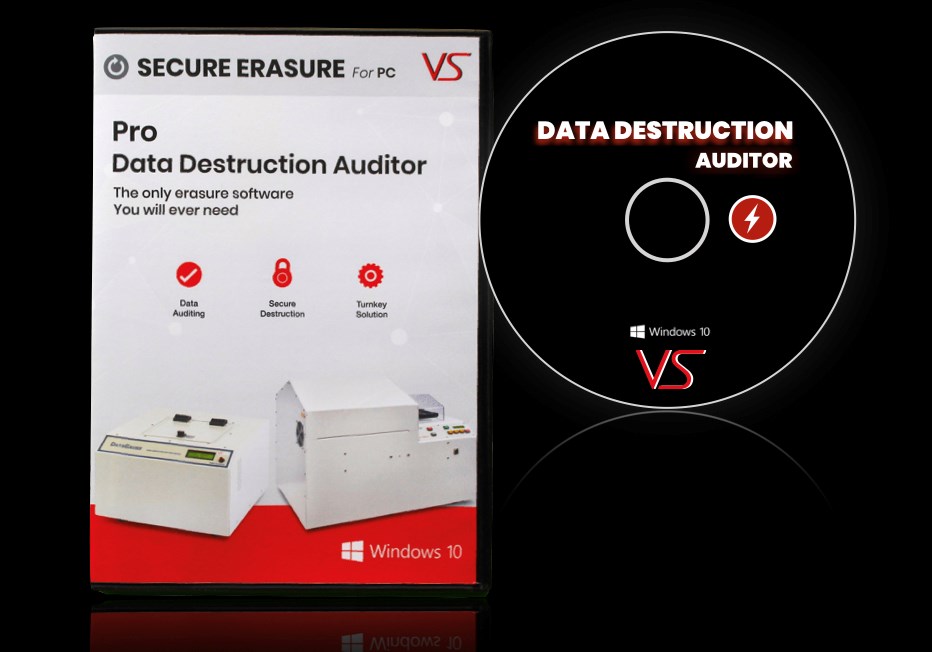Why Data Destruction is an Important Part of Comprehensive Cyber Security
Why Data Destruction is an Important Part of Comprehensive Cyber Security
Blog Article
The Crucial Nature of Information Destruction in Upholding Computer Protection Services and Protecting Against Unauthorized Access
In a period where data violations and identity theft are progressively widespread, the importance of reliable information devastation can not be overemphasized. Various methods, from data cleaning to physical destruction, serve as vital safeguards versus unapproved access.
Value of Information Destruction
In a progressively electronic globe, the importance of information devastation can not be overstated. As companies accumulate large quantities of sensitive info, the prospective effects of falling short to correctly dispose and take care of of that information become increasingly extreme. Information violations, identification theft, and company espionage position considerable hazards, underscoring the necessity of efficient data damage methods.

Additionally, as innovation evolves, so as well do the methods by which destructive stars seek to make use of delicate info. Organizations needs to remain aggressive and alert in their information destruction approaches to protect versus these progressing threats. By focusing on data damage, firms not just safeguard their possessions yet likewise foster count on among stakeholders and customers, demonstrating a dedication to liable data management and security practices.
Techniques of Effective Data Destruction
To make sure the permanent and full damage of delicate data, organizations can utilize a selection of effective techniques customized to their particular requirements. One of one of the most usual methods is data cleaning, which involves using specialized software to overwrite existing information several times, making healing virtually difficult. This is particularly helpful for solid-state drives and tough drives, where traditional removal methods are poor.
An additional effective strategy is degaussing, which uses solid electromagnetic fields to interrupt the magnetic domain names on storage space media, rendering the data irretrievable. This technique is especially suited for magnetic storage tools, such as disk drive and hard drives.
Physical destruction is additionally a sensible alternative, involving the shredding, squashing, or incineration of storage devices. This method assurances that data can not be recouped, making it suitable for organizations taking care of extremely sensitive information.

Compliance With Data Security Rules
Organizations must not just concentrate on reliable data destruction techniques yet also guarantee conformity with data defense laws that control just how sensitive info is managed and thrown away. Complying with these regulations is necessary for protecting individual information and keeping client count on. Regulations such as the General Information Defense Regulation (GDPR) in the European Union and the Wellness Insurance Coverage Mobility and Liability Act (HIPAA) in the USA impose stringent guidelines on data administration, which consist of requirements for the protected disposal of sensitive information.
To attain compliance, organizations must execute extensive data destruction plans that line up with these lawful frameworks. This consists of recognizing information that calls for destruction, developing methods for safe and secure methodsâEUR" such as shredding physical media or using software program that fulfills market requirements for data wipingâEUR" and preserving thorough documents of destruction tasks. Routine audits must be carried out to ensure adherence to these visit the site plans and to determine any prospective areas for renovation.
Failing to adhere to data protection laws can lead to significant legal implications, including substantial penalties and damages to an organization's credibility. Incorporating compliance right into information damage techniques is not only a lawful responsibility but additionally a vital component of a robust details safety and security method.
Consequences of Poor Information Handling
Poor information handling can result in severe consequences that expand past immediate operational obstacles. Organizations may deal with substantial monetary losses as a result of data breaches, which usually lead to expensive removal efforts, lawful charges, and regulative fines. These financial implications can stress resources and impede growth, eventually influencing an organization's profits.
Additionally, inadequate information handling can severely harm an organization's credibility. Partners, stakeholders, and clients might shed trust in an entity that falls short to secure sensitive information, causing reduced customer loyalty and potential loss of service possibilities. This disintegration of count on link can take years to rebuild, if it can be restored in any way.
Additionally, organizations could face lawful ramifications occurring from non-compliance with information protection laws. Such infractions might lead to charges and investigations, worsening the economic problem and additional staining the organization's photo.
In the realm of cybersecurity, inadequate information management techniques can develop vulnerabilities that make systems much more vulnerable to unauthorized access and cyberattacks. Ultimately, these effects underscore the crucial value of applying durable information handling treatments to protect sensitive details and keep organizational honesty.
Ideal Practices for Secure Information Disposal


Firstly, information ought to be identified according to its level of sensitivity. Delicate details calls for more rigorous disposal approaches, such as shredding physical files and using innovative software for electronic data wiping. Utilizing certified information destruction services makes sure conformity with industry policies and criteria.
Second of all, organizations must execute an information disposal policy that mandates routine audits. This plan needs to outline the procedures for data retention and destruction, making sure that obsolete data is disposed of immediately and safely. Educating workers on these procedures is necessary to promoting a society of security awareness.
Finally, maintaining in-depth records of disposed data enhances liability and gives a clear audit route. This documents must include the sort of data damaged, the approach made use of, and the important link day of disposal.
Final Thought
In verdict, the vital of effective information damage appears in its role in boosting computer protection solutions and mitigating unapproved accessibility threats. Adopting robust methods such as data cleaning, degaussing, and physical devastation, alongside conformity with policies like GDPR and HIPAA, is crucial for guarding sensitive information. Disregarding appropriate data disposal techniques can bring about serious consequences, including data violations and legal consequences. Implementing ideal methods in protected data disposal eventually fortifies organizational integrity and customer depend on.
In an era where data violations and identification theft are increasingly prevalent, the relevance of efficient information devastation can not be overemphasized. data destruction. Data violations, identification theft, and corporate espionage pose considerable hazards, underscoring the requirement of reliable data damage methods
Conformity with laws such as GDPR and HIPAA mandates that companies apply rigorous information defense measures, including the safe damage of information at the end of its lifecycle.
By focusing on information devastation, business not only safeguard their possessions however also foster depend on amongst clients and stakeholders, showing a dedication to responsible information management and safety and security methods.
Organizations need to not just concentrate on reliable information devastation approaches yet additionally ensure conformity with information defense regulations that govern how sensitive info is managed and disposed of.
Report this page